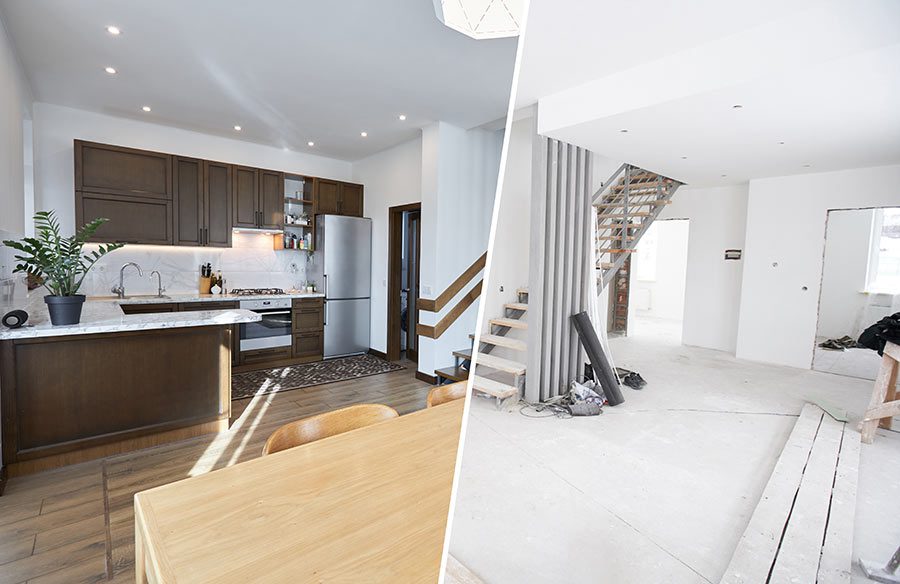Historic Home Revival: Before and After Renovations
Business 0 CommentsWarning: Trying to access array offset on value of type null in /home/59053787/domain/public_html/wp-content/themes/simple-east/content.php on line 37
Historic homes hold a special place in our hearts and communities. They are not just structures made of bricks and wood, but rather they are a reflection of our past, our culture, and our identity. These homes have stood the test of time, surviving through generations and witnessing the evolution of our society.
However, with age comes wear and tear, and many of these homes are in dire need of renovation and restoration. The challenge lies in preserving their unique historical features while also modernizing them to meet the demands of today’s lifestyle. In recent years, there has been a growing trend of reviving historic homes, with homeowners and designers taking on the task of restoring these architectural gems.
In this article, we will delve into the world of historic home renovations and explore the transformative effects of these projects. From before and after pictures to expert insights, we will take a closer look at the process of bringing new life to historic homes and reinvigorating their beauty for generations to come.
Preserving architectural integrity with modern updates.
The preservation of architectural integrity while incorporating modern updates is a delicate balance that requires careful consideration and expertise. When embarking on a project to revive a historic home, it is crucial to respect the original design and craftsmanship while also meeting the functional needs and aesthetic preferences of contemporary living.
By blending traditional elements with modern amenities, such as advanced technology and energy-efficient systems, it is possible to create a seamless integration that enhances the home’s character and livability.
Attention to detail, craftsmanship, and utilizing materials that align with the home’s original era are essential in achieving a successful historic Home Renovation Before and After that seamlessly marries the past with the present.
Transforming outdated spaces into functional rooms.
When transforming outdated spaces into functional rooms within a historic home, it is essential to approach the renovation process with sensitivity and an understanding of the home’s unique architectural features.
By carefully assessing the existing layout and considering the needs of modern living, it is possible to breathe new life into neglected areas while preserving the charm and character of the home. Thoughtful design choices, such as repurposing underutilized spaces or incorporating period-appropriate fixtures and finishes, can help to create functional rooms that seamlessly blend with the overall aesthetic of the home.
Whether it’s converting an old attic into a cozy home office or transforming a basement into an inviting recreational space, each restoration project brings its own set of challenges and rewards, ultimately resulting in a revitalized home that honors its history while meeting the demands of contemporary living.
Reviving original charm and character.
During the renovation process of a historic home, the goal is to revive its original charm and character, paying homage to its rich history. This involves meticulous attention to detail and a careful restoration approach that respects the home’s architectural integrity.
By uncovering hidden gems, such as original hardwood floors or ornate moldings, and restoring them to their former glory, the home is able to regain its unique personality. Additionally, preserving and restoring features like fireplaces, intricate stained glass windows, and intricate woodwork can further enhance the home’s historic allure.
The result is a transformation that not only brings the home back to life but also allows future generations to appreciate and enjoy its timeless elegance.
Restoring historical features to perfection.
As the restoration process progresses, it is crucial to focus on achieving perfection in restoring the historical features of the home. This requires a skilled and experienced team of artisans and craftsmen who understand the importance of preserving the authenticity of each element.
Whether it is repairing delicate plasterwork, recreating intricate ceiling medallions, or sourcing period-specific fixtures and fittings, every detail must be meticulously attended to. The goal is not simply to recreate the past, but to bring it back to life in a way that seamlessly blends with modern comforts and functionality.
By combining meticulous research, expert craftsmanship, and a deep appreciation for the home’s history, the restoration process can transform a dilapidated property into a true architectural masterpiece.
Bringing new life to antiquated structures.
One of the most rewarding aspects of restoring antiquated structures is the opportunity to breathe new life into these historic gems. From neglected Victorian mansions to crumbling Colonial-era buildings, each structure has a unique story to tell.
The restoration process involves careful planning and execution, ensuring that the original character and charm of the property are preserved while incorporating modern amenities. By seamlessly blending past and present, these once-forgotten structures are revitalized, becoming vibrant spaces that harmoniously coexist with their surroundings.
Whether it’s converting old barns into charming guesthouses or transforming aged warehouses into trendy loft apartments, the revival of antiquated structures not only honors their historical significance but also contributes to the preservation of our cultural heritage.
After taking a closer look at the before and after photos of this historic home renovation, it’s clear that the transformation is nothing short of impressive. The attention to detail and preservation of the home’s original character is a testament to the skill and expertise of the renovation team.
This project serves as a prime example of how a historic home can be revived and brought back to life while still maintaining its charm and unique features. It’s sure to inspire and impress anyone embarking on a historic home renovation journey.
Warning: Trying to access array offset on value of type null in /home/59053787/domain/public_html/wp-content/themes/simple-east/content.php on line 74
